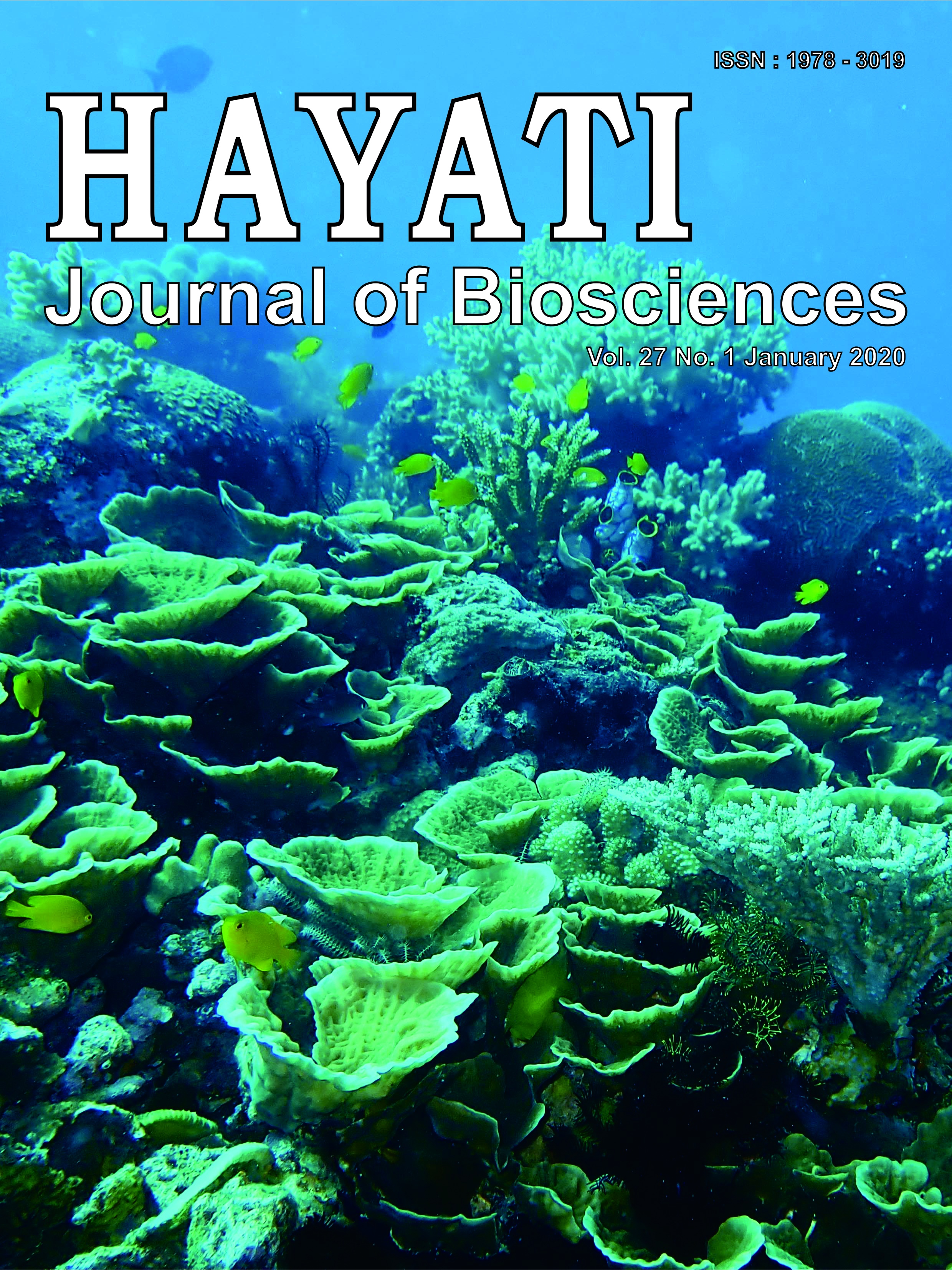Photosynthetic Rate of Lettuce Cultivated on Floating Raft Hydroponic with Controlled Nutrient Solution
Abstract
Lettuce becomes the main ingredient of salad as one of the healthy foods. The lettuce cultivation in tropical areas is often performed in highland. To reduce soil erosion and pesticide contamination, the cultivation of lettuce plants in high open land needs to be reduced. The lettuce cultivation in hydroponic system at tropical lowland requires cooling. The root zone cooling requires enormous electrical energy. However, it can be solved by controlling the temperature based on the automatically. Therefore, it has been developed control and monitoring system for the root zone on floating raft hydroponic system. This study aimed to evaluate the photosynthetic rate of lettuce cultivated in floating raft hydroponic system whose nutrient solution was controlled by the developed control and monitoring system. Statistical analysis was performed to draw the conclusions about photosynthetic variance of lettuce on two hydroponic systems, namely controlled and uncontrolled system. Furthermore, this paper presents an artificial neural network (ANN) model to estimate the photosynthetic rate of lettuce cultivated in the hydroponic systems. The ANN model was comprised of eight input (nutrient temperature, EC, pH, DO, and ORP, air temperature, air humidity, and photon flux density of photosynthetic) and one output (photosynthetic rate). It was noted that the ANN model predicted accurately the photosynthetic rate of lettuce leaves whose R2 was 0.87 for plants cultivated in floating raft hydroponic system whose nutrient solution was controlled by control and monitoring system. The ANN was useful for identifying the photosynthetic rate of lettuce cultivated in floating raft hydroponic systems on tropical lowland.
Downloads
HAYATI J Biosci is an open access journal and the article's license is CC-BY-NC. This license lets others distribute, remix, tweak, and build upon author's work, as long as they credit the original creation. Authors retain copyright and grant the journal/publisher non exclusive publishing rights with the work simultaneously licensed under a https://creativecommons.org/

























.png) IPB University
IPB University Department of Biology
Department of Biology The Indonesian Biological Society
The Indonesian Biological Society 

